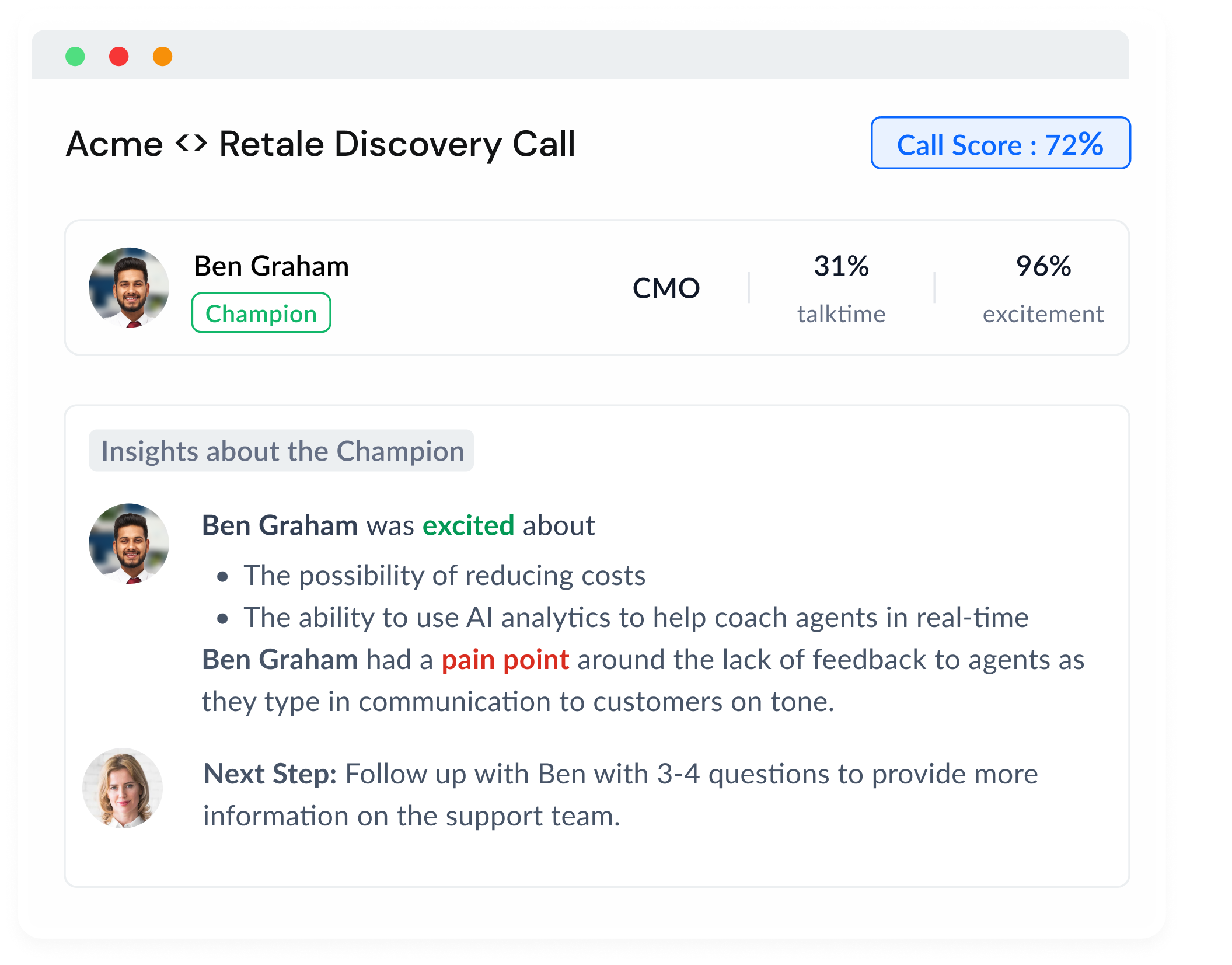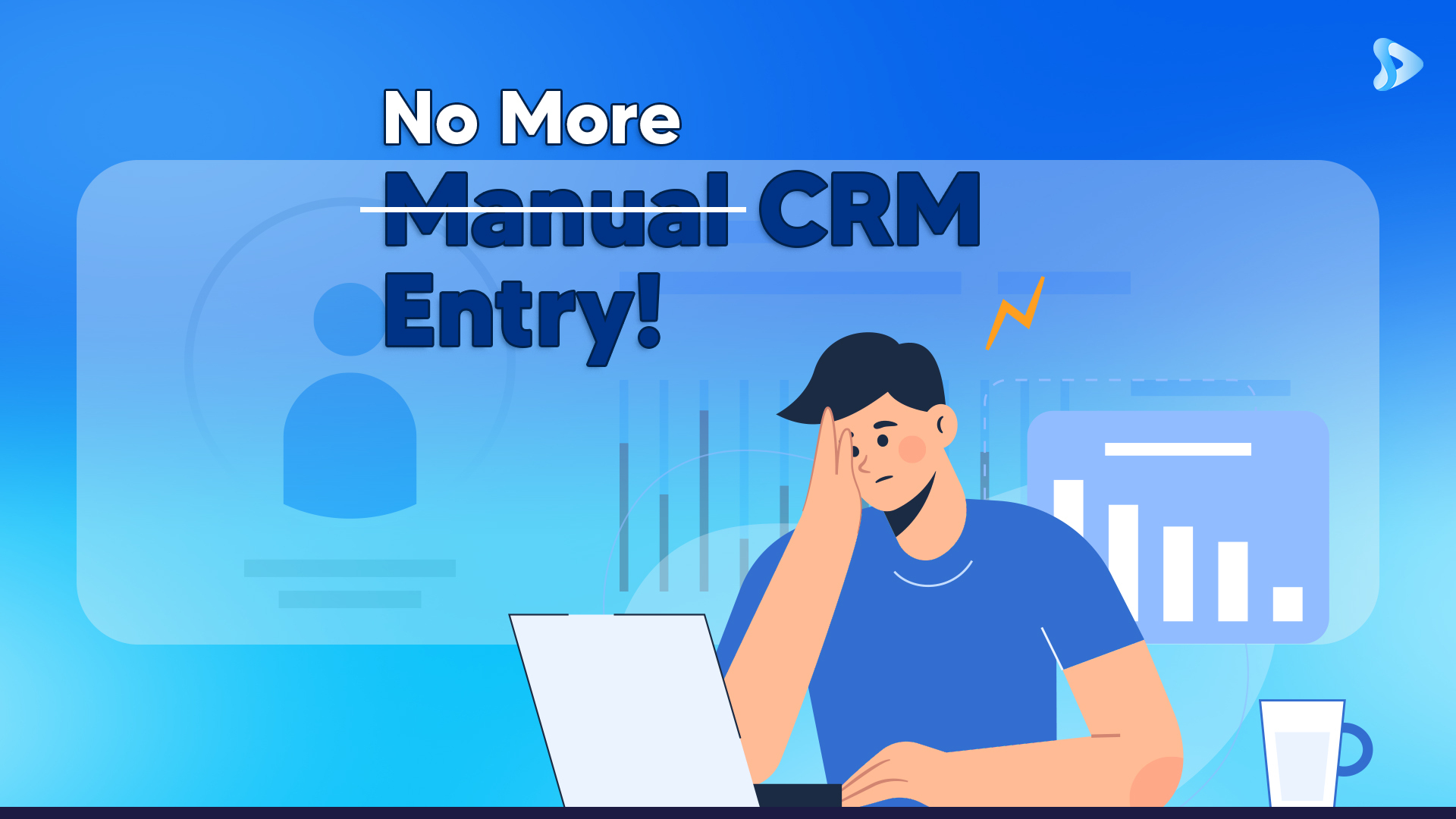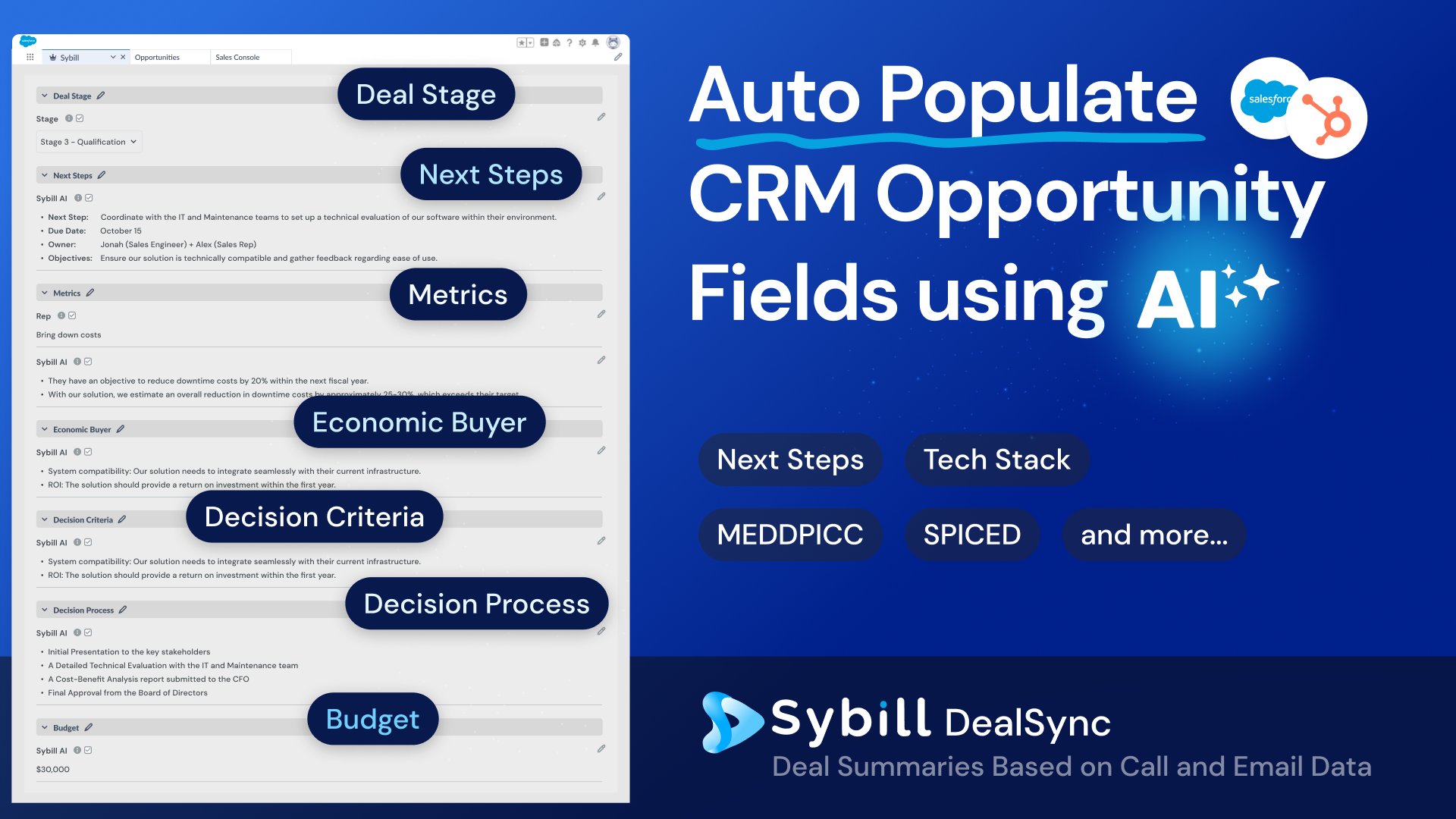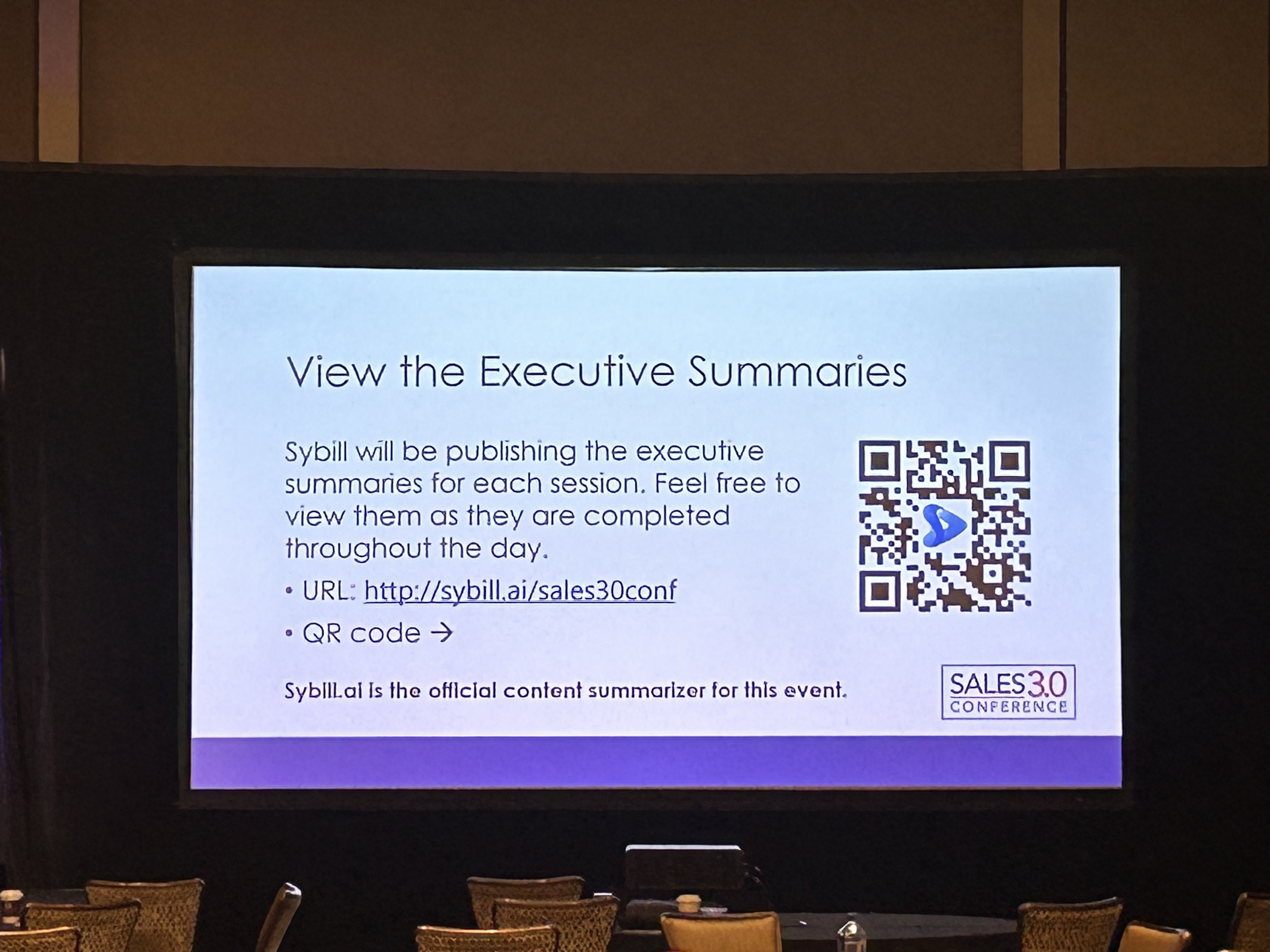8000 requests on the day of its launch.
20 million active users.
1 billion usage minutes. Per day.
65 global brands using Slack everyday to collaborate, out of the top 100 Fortune 500s.
From Vodafone to Deliveroo, Sephora to Schbang, and most of all, nearly all Sybill customers.
Slack is the water cooler of the digital workplace. The enterprise world loves it. So when our users told us, repeatedly, that it was their preferred messaging app, we knew we had it make it easy for them to find Sybill insights where it made sense to them.
No More Digital Gymnastics: Sales Call Insights Delivered Where You Are
In the day-to-day life of a sales pro, a lot of digital juggling goes around. One minute, you're on a Zoom call, the next, you're buried in an email thread, and then you're bouncing over to Slack to answer a quick question.
Some days, it can feel like being a circus performer, but instead of juggling flaming torches, you're juggling apps! While this may seem like a minor inconvenience, it’s much worse in the long run - it disrupts the flow of work, ultimately hampering productivity.
We didn't want Sybill to be just one more tool in the already bloated sales enablement stack. We knew we had to reduce the clutter and chaos of sales workflows.
Sybill’s Slack integration does precisely that. Users have a personal assistant to do the juggling act for them.
SDRs and AEs Can’t Stop Raving About Sybill’s Slack Integration
Because they no longer need to jump out of their ongoing conversations to check on a sales meeting's summary or a prospect’s emotional responses during a recent call. Within minutes of every sales call, they find a holistic summary right within Slack.
These summaries and AI-generated insights - on outcomes, action items, highlights, and even a meeting score - are effortlessly shareable within your Slack channels or direct messages.
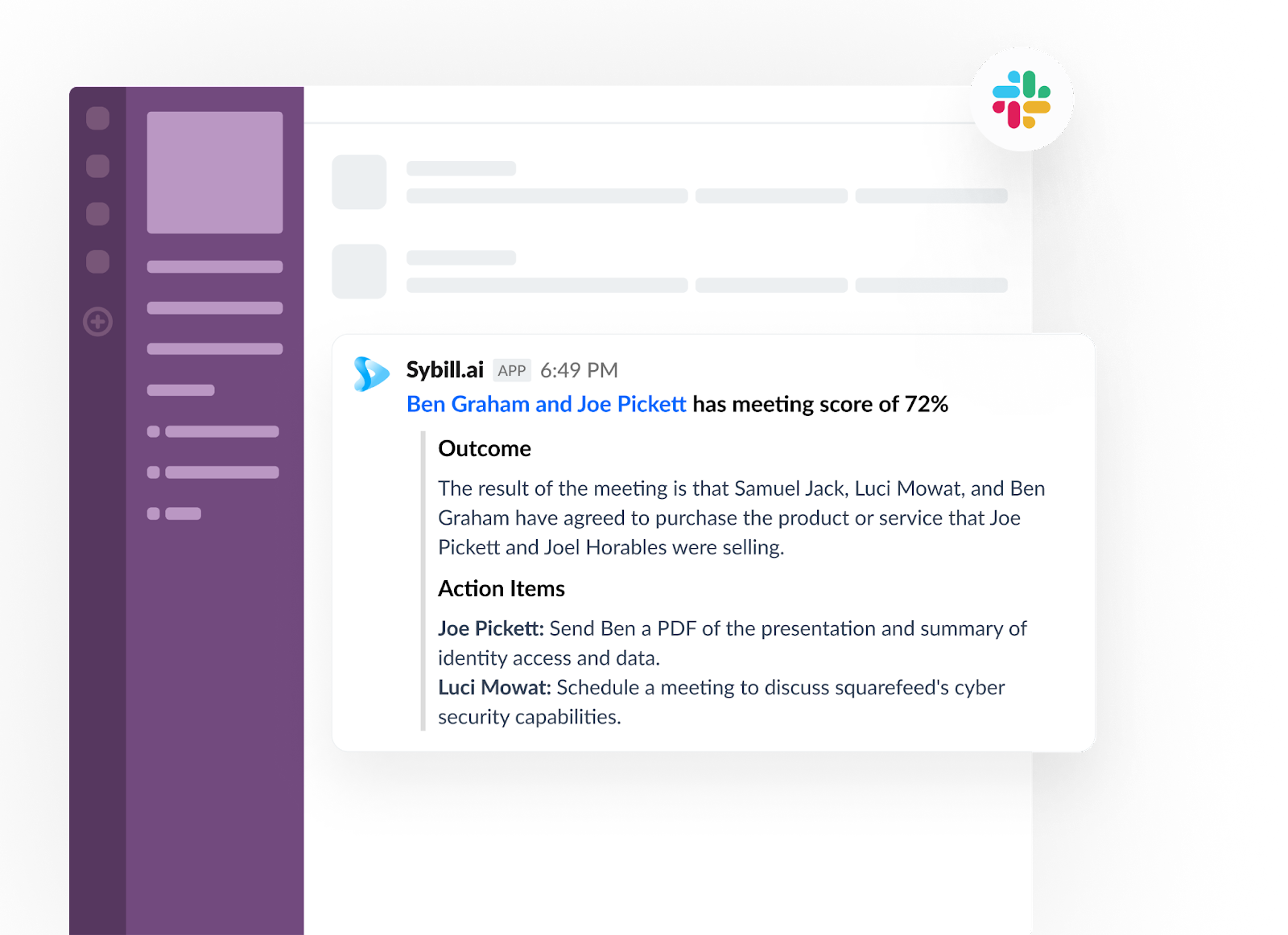
Why Sales Leaders Love Sybill’s Slack Integration: Removing Sales Forecasting Barriers with Complete Transparency
We asked the sales leaders within and outside our user community about their biggest barriers to forecasting precision. Turns out that the answer was almost always the problem of subjectivity and inconsistent visibility into the actual sales conversations.
We recently wrote about the happy ear syndrome, when sales pros sometimes let their optimism get the best of them. Sometimes, the problem can be the polar opposite too. What remains the same, though, is the problem of forecasting inconsistency and lack of precision.
And yet, it is simply not possible for leaders to attend every single call or have complete, objective insights into what really went down in each of them.
Until now! With the Slack integration, every sales leader gets holistic and truly objective insights on every sales call, delivered straight into their Slack.
Champions, detractors. Call score. Buying intent. Objections. Highlights and next steps. Pretty much everything you need to know, to be able to pinpoint a deal going well and one that's not. Not only does this help with forecasting precision, but also allows our senior users to swoop in and save deals with their expertise.
Sales leaders also have constant visibility into SDR and AE performance in real-world sales scenarios, enabling them to pinpoint coachable moments or design a long-term coaching and development strategy for each individual team member.
Building a performance-centric sales team - that crushes quotas, stays empathetic to buyers' needs, and indexes high on transparency and collaboration - it's never been this easy.
Less Juggling, More Selling
While sales teams get a streamlined platform for communication, collaboration, and insight sharing, leaders get a granular view of sales activities. They can gauge the team's pulse, monitor client interactions, and leverage AI-powered emotional intelligence, all within the familiar landscape of Slack.
Our users tell us it's like watching the play from the best seat in the house, with the ability to direct the actors to give their best shot. Every day.
Ultimately, the Slack-Sybill integration is about reducing the juggling act and focusing on what sales pros do best - selling.
It's about bringing down the number of flaming torches you're expected to keep in the air. With less time spent bouncing between tools, there's more time for meaningful conversations, strategic thinking, coaching and mentoring, and of course, closing deals.













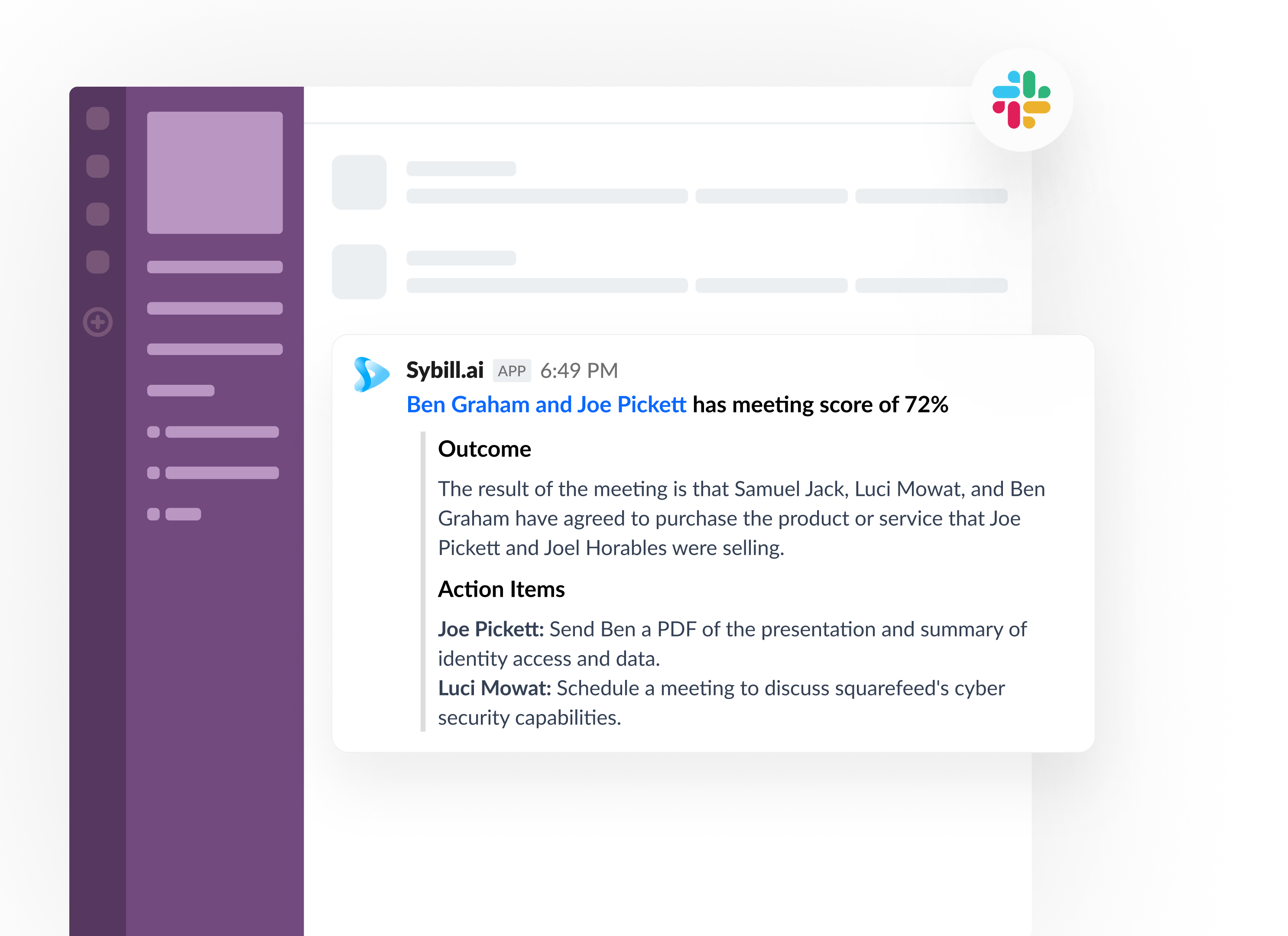

.png)
